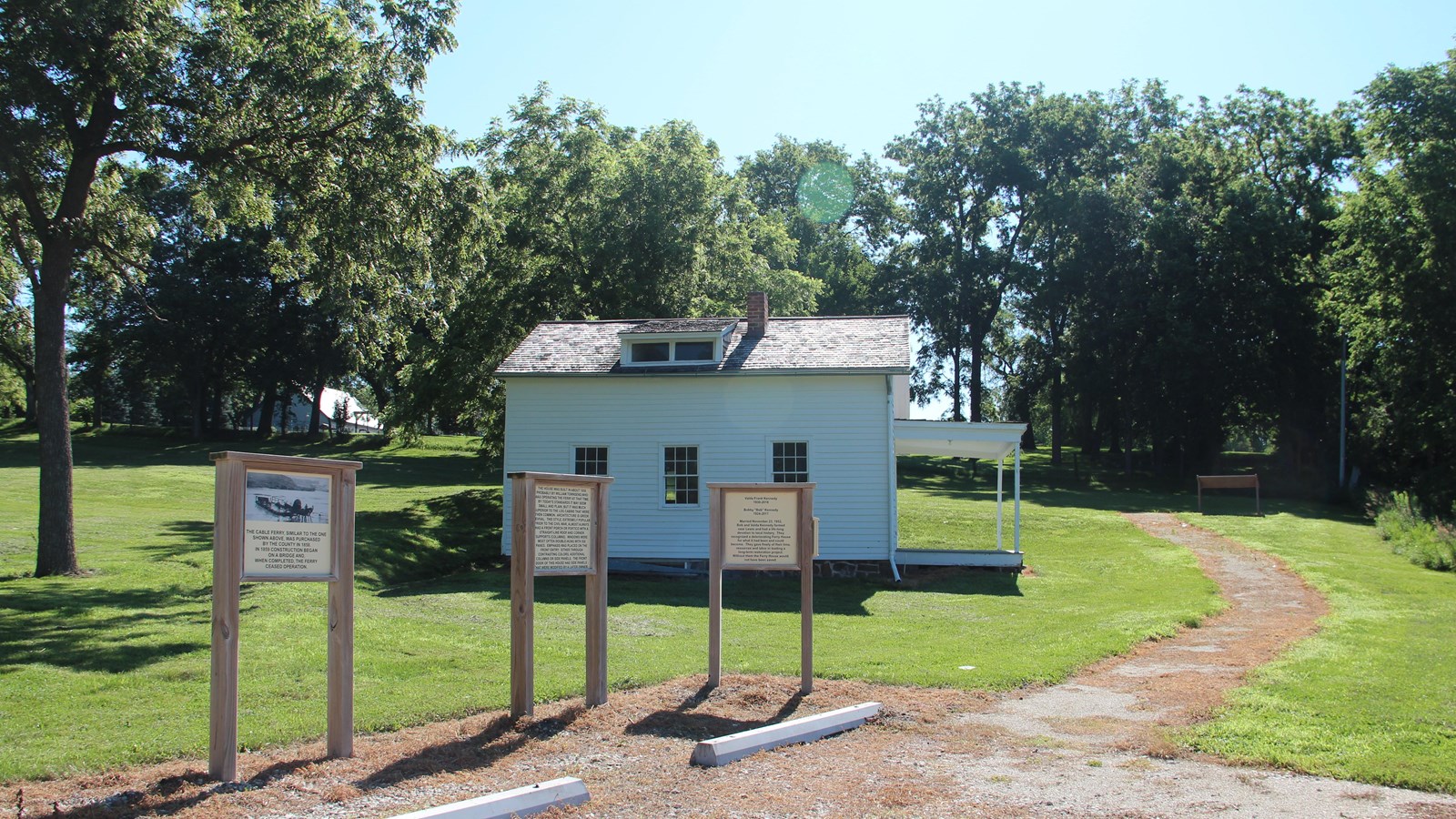Last updated: August 4, 2025
Place
Cold Springs State Park

Photo/ L. Kreutzer
Beach/Water Access, Boat Ramp, Historical/Interpretive Information/Exhibits, Parking - Auto, Picnic Table, Restroom
Brigham Young’s vanguard company camped the evening of June 7, 1846, at Pleasant Valley, about 5 miles southeast of present-day Lewis, IA. The following morning, the wagons started northwestward past present-day Cold Springs State Park, where a deep, spring-fed creek then existed instead of the lake found there today.
Researchers have determined that Young’s vanguard company crossed about a mile from the park, but the later exodus out of Nauvoo in spring 1846 likely drove directly through Cold Springs. That conclusion is supported by the presence of wagon swales that emerge from the park to cross a privately owned field west of the park’s camping loop. While the multiple parallel swales can be difficult to see from the park’s boundary fence, they are viewable on online satellite imagery. A vertical exhibit sign about the trek from Nauvoo to Utah stands in the campground area on the west side of the park.
The 1846 vanguard wagons continued north through the future townsite of Lewis and turned west to cross the East Nishnabotna River over a bridge built by a crew of Mormon workmen. (By the 1850s, ferries and a toll bridge served traffic at the crossing, then known as Mormon Crossing. A ferryman’s home from the mid-1850s still stands near the former river channel on Minnesota Street/Nishna Valley Road about a quarter-mile west of Lewis. In 1856-1857, Mormon handcart brigades trudged past the cabin to ford the East Nishnabotna a short distance to the north.)
On the west side of the river, emigrants approached the Potawatomi/Ottawa/Chippewa Indian village of Mi-Au-Mise. This large village stood on a ridge about a mile northwest of Cold Springs State Park. Mormon pioneer John D. Lee wrote that the village comprised 50 wigwams – small, dome-shaped houses with a sapling framework covered with tree bark. However, its residents told another emigrant, Horace Whitney, that they had 130 wigwams. The villagers and emigrants frequently exchanged friendly visits while the wagon companies were in the area. To William Clayton, whose party passed Cold Springs and approached the Potawatomi village on June 10, “it seemed that the whole village had turned out, men, women and children, some on horses and many on foot.” He continued, “Their musicians came and played while we passed them. They seemed to escort our wagons and asked if we were Mormons. When we told them we were they seemed highly pleased.”
By 1848, when 15 late-departing Nauvoo families reached this place, they found the village abandoned, its occupants removed by the US government. These Latter-day Saints halted and overwintered at the village, sheltering in the emptied wigwams. A wayside exhibit that tells of the Native Americans who lived here can be viewed at historic Hitchcock House at 63788 567th Lane, on the west side of the river, about a half-mile west of Lewis.
Site Information
Location (57744 Lewis Rd. Unit 1, Lewis, IA)
Amenities
The park offers beach/water access, benches, boat ramp, canoe/kayak/Small Boat launch, dock/pier electrical hookup, historical/interpretive information/exhibits, parking-auto, parking-boat trailer, picnic shelter/pavilion, picnic table, playground, tent campsites, hiking trails, restrooms, sewage dump station, showers, camping, electric, bath/shower
Safety Considerations
